Your cart is currently empty!
Blog
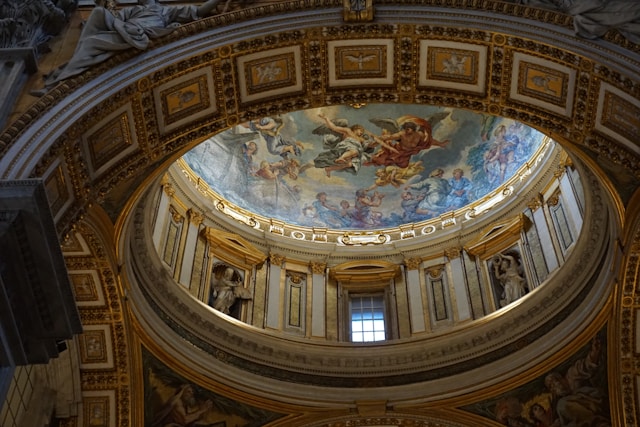
Discover St. Peter’s Cathedral: A Journey Through History, Art, and Faith
St. Peter’s Cathedral, the grand patriarchal basilica in Vatican City, is not just an architectural marvel but a sacred symbol of Christianity. Its construction spanned centuries, leaving behind a rich history intertwined with the rise of the Catholic Church and the development of Western art.
A History of Sacred Ground
Constantine’s Basilica: The Genesis
In the 4th century AD, Emperor Constantine the Great, a convert to Christianity, ordered the construction of a basilica over the presumed tomb of Saint Peter, the first pope. This original basilica became a pilgrimage site, drawing countless faithful from afar.
Renaissance and Baroque Reconstruction
By the 15th century, the basilica was in ruins. Pope Julius II initiated its reconstruction in 1506, appointing the renowned architect Donato Bramante. The project continued under subsequent popes, with major contributions from Michelangelo, Bernini, and Maderno. The new cathedral was completed in 1626.
Architectural Splendor
The Façade
The imposing façade, designed by Carlo Maderno, features a colonnade of 284 Doric columns and pilasters, framing five portals. The central portal, known as the Holy Door, is opened only during Jubilee years.
The Dome
Michelangelo’s masterpiece, the dome of St. Peter’s, is a marvel of engineering and aesthetics. Its double shell creates an illusion of lightness, while its interior is adorned with vibrant mosaics depicting scenes from the life of Saint Peter and the resurrection of Christ.
The Nave and Aisle
The vast interior of the cathedral is divided into a nave and four aisles. The nave is flanked by massive piers that support the dome and feature statues of saints and popes. The aisles are lined with chapels, each adorned with exquisite artwork and religious relics.
Artistic Treasures
Michelangelo’s “Pietà”
One of the most poignant masterpieces in art history, Michelangelo’s “Pietà,” carved from a single block of marble, depicts the grieving Mary holding the body of Jesus after his crucifixion. It is located in the first Vatican Chapel to the right of the entrance.
Bernini’s “Baldacchino”
Gian Lorenzo Bernini’s bronze canopy, or “baldacchino,” stands over the main altar in the crossing of the transept. Its twisted columns, soaring height, and ornate details embody Baroque exuberance.
Papal Center and Place of Pilgrimage
The Papal Throne
The Papal Throne, located in the apse of the cathedral, is a symbol of papal authority. It is used by the Pope during important ceremonies and celebrations.
Pilgrimage Destination
St. Peter’s Cathedral has been a major pilgrimage destination for centuries. Pilgrims from all over the world visit the tomb of Saint Peter, pray in the sacred spaces, and admire the stunning artwork.
Visiting St. Peter’s Cathedral
Planning Your Visit
Admission to the cathedral is free, but there are fees for accessing certain areas, such as the dome and the Vatican Grottoes. It is recommended to book guided tours in advance to avoid long queues.
Dress Code and Security
Appropriate attire is required to enter the cathedral. Shoulders and knees should be covered. There are strict security checks, so be prepared to present your belongings for inspection.
Other Tips
- Allow ample time for your visit, as the cathedral is vast.
- Bring water and wear comfortable shoes.
- Respect the sacred nature of the space by maintaining silence and avoiding disruptions.
Conclusion
St. Peter’s Cathedral is a testament to human ingenuity, artistic brilliance, and deep faith. Its history, architecture, and artwork invite us to marvel at the grandeur of the human spirit. Whether you are a pilgrim, an art enthusiast, or simply a curious traveler, a visit to St. Peter’s Cathedral is an unforgettable experience that will leave you inspired and awestruck.
Additional Resources
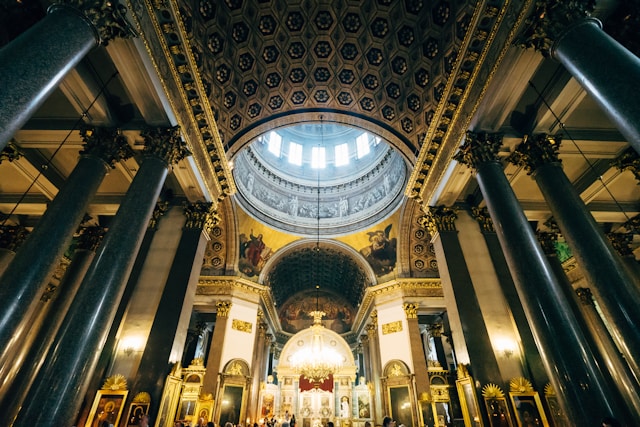
Unlocking the True Essence of a Savior: A Comprehensive Guide
Introduction
Salvation, an age-old concept deeply ingrained in human consciousness, has been integral to numerous religions and belief systems throughout history. At the heart of this concept lies the pivotal figure known as a savior. A savior signifies hope, redemption, and deliverance from suffering or adversity. This in-depth guide delves into the multifaceted nature of a savior, examining its significance, manifestations, and the transformative impact it has on individuals and communities.
Understanding the Etymology and Evolution of the Term
The term “savior” originates from the Latin word “salvator,” which means “deliverer” or “rescuer.” Across various cultures and epochs, the concept of a savior has evolved, reflecting the specific beliefs and aspirations of each society. In ancient Greece, for instance, the savior was often associated with heroic figures who liberated people from external threats or oppressive forces. In Christianity, Jesus Christ is revered as the savior who redeems humanity from sin and offers eternal salvation.
Manifestations of a Savior
Savior figures can manifest in diverse forms, each embodying unique qualities and serving distinct purposes:
Divine Savior:
In many religions, the savior is perceived as a divine being or a messenger from the divine realm. They possess supernatural powers and embody wisdom, love, and compassion. Examples include Jesus Christ (Christianity), Krishna (Hinduism), and Buddha (Buddhism).
Humanitarian Savior:
Some saviors are ordinary humans who dedicate their lives to alleviating suffering and promoting the well-being of others. They may lead social movements, fight for human rights, or provide humanitarian aid in times of crisis. Examples include Nelson Mandela (anti-apartheid movement), Mother Teresa (Missionaries of Charity), and Malala Yousafzai (education activist).
Symbolic Savior:
Savior figures can also be symbolic representations of ideas or ideals. They embody the hopes and aspirations of a particular group or society. For example, in Marxism, the proletariat is seen as the savior that will overthrow capitalism and establish a just and equitable society.
The Role of Saviors
Savior figures play a crucial role in human societies by:
Offering Hope and Redemption:
Savior figures provide solace and hope in times of despair. They inspire belief that even in the darkest of times, there is a path to liberation and salvation.
Promoting Transformation:
Savior figures often embody ideals and values that inspire individuals to strive for self-improvement and spiritual growth. Their teachings and actions can catalyze positive change in both individuals and communities.
Unifying People:
Savior figures can foster a sense of unity and solidarity among people. They bring people together by offering a shared vision of hope, redemption, and a better future.
Historical and Cultural Examples of Saviors
Throughout history, numerous individuals have been revered as saviors in different cultures and contexts:
Name Culture/Religion Role Jesus Christ Christianity Divine Savior, Son of God Krishna Hinduism Divine Avatar, Supreme God Buddha Buddhism Enlightened Teacher, Founder of Buddhism Moses Judaism Prophet, Leader of the Israelites Muhammad Islam Prophet, Founder of Islam Martin Luther King Jr. Civil Rights Movement Humanitarian Savior, Advocate for Equality Nelson Mandela Anti-Apartheid Movement Humanitarian Savior, President of South Africa How to Identify True Saviors
In a world filled with false prophets and self-proclaimed messiahs, it is essential to be able to discern genuine saviors from imposters. Here are some key characteristics to look for:
- Selflessness: True saviors prioritize the well-being of others above their own personal interests.
- Humility: They do not seek fame or glory, but rather serve others with modesty and humility.
- Integrity: Their actions align with their words, and they embody the values they preach.
- Compassion: They possess deep empathy and understanding for the suffering of others.
- Inspiring Actions: Their teachings and actions motivate and empower people to make positive changes in their lives and communities.
Conclusion
The concept of a savior is a multifaceted and enduring theme in human history. Savior figures embody hope, redemption, and transformation, inspiring individuals and communities to strive for a better future. Whether divine, humanitarian, or symbolic, saviors play a crucial role in shaping human destiny. By understanding the different manifestations and characteristics of saviors, we can better appreciate their transformative power and seek guidance and inspiration from those who truly embody the essence of salvation.
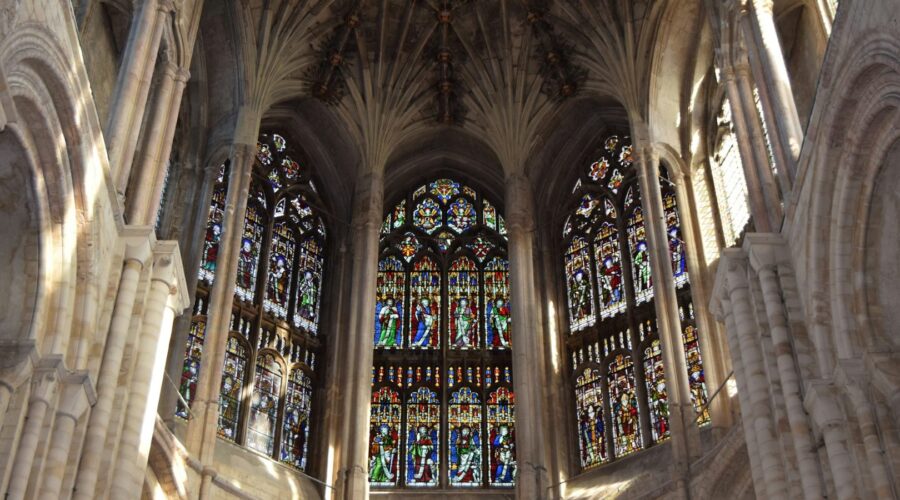
The 95 Theses: A Catalyst for Reformation
Introduction
Martin Luther’s 95 Theses ignited the Protestant Reformation, a transformative movement that reshaped Christianity in Europe. On October 31, 1517, Luther publicly posted his Theses on the door of the Castle Church in Wittenberg, challenging the Catholic Church’s practices and doctrines.
The Context
The 16th century witnessed widespread dissatisfaction within the Catholic Church. Corruption and abuses of power, such as the sale of indulgences, had eroded the trust of many believers. Humanist scholars promoted critical thinking and questioned traditional authority, creating an atmosphere conducive to reform.
The 95 Theses
Luther’s 95 Theses were a series of propositions attacking the Church’s practices and beliefs. Key points included:
- Indulgences could not absolve sin.
- Only faith in Christ could bring salvation.
- The authority of the Pope was not absolute.
- The Bible was the sole source of religious truth.
The Response
The Catholic Church vehemently opposed Luther’s Theses. Pope Leo X excommunicated Luther in 1520, but Luther’s ideas spread rapidly throughout Europe, aided by the newly invented printing press.
The Impact
The 95 Theses had a profound impact on Christianity and European history:
Religious Reformation
- Led to the establishment of Protestantism.
- Promoted the principles of justification by faith, the authority of Scripture, and the priesthood of all believers.
Political and Social Changes
- Weakened the power of the Catholic Church.
- Contributed to the rise of nation-states and the decline of feudalism.
- Inspired movements for political and social reform.
Intellectual Revolution
- Challenged traditional authority and encouraged critical thinking.
- Laid the foundation for the Enlightenment and modern science.
Key Points
The 95 Theses were significant for several reasons:
- Timing: They were published at a time when the Catholic Church was facing widespread discontent.
- Content: Luther’s Theses boldly challenged established practices and beliefs.
- Distribution: The printing press allowed the Theses to spread rapidly throughout Europe.
- Impact: They ignited the Protestant Reformation and had far-reaching effects on religion, politics, and society.
Conclusion
Martin Luther’s 95 Theses were a transformative document that played a pivotal role in the Protestant Reformation. Their challenge to the Catholic Church’s authority and their promotion of faith, Scripture, and the individual believer continue to shape Christianity and Western civilization to this day.
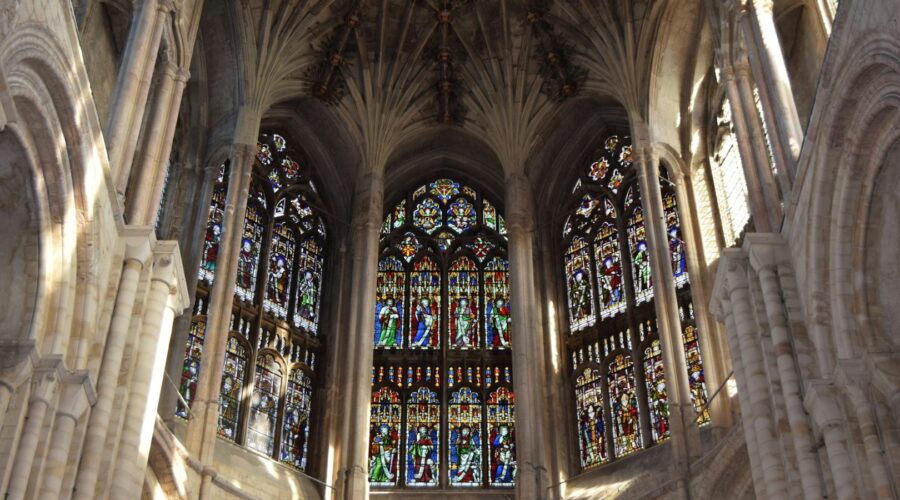
Unveiling the Devotion to Our Lady of Mount Carmel: A Journey of Grace and Intercession
Introduction
Throughout history, the Blessed Virgin Mary has been venerated under various titles, each evoking her multifaceted role in the Christian faith. One of the most beloved and widespread devotions is to Our Lady of Mount Carmel, a title deeply rooted in the spiritual tradition of the Carmelite Order.
Historical Origins
Foundation of the Carmelite Order
The origins of the Carmelite Order can be traced back to the 12th century on Mount Carmel in the Holy Land. A group of hermits, inspired by the writings of the Prophet Elijah, established a small community dedicated to prayer and contemplation.
Arrival in Europe
In the 13th century, the Carmelites fled to Europe due to the Muslim conquests in the Middle East. They settled in various countries, including England, France, and Italy, where their devotion to Our Lady flourished.
Devotional Practices
The Brown Scapular
One of the central practices of the devotion to Our Lady of Mount Carmel is the wearing of the Brown Scapular. This small cloth scapular, worn over the shoulders, symbolizes the protection and intercession of Mary.
According to tradition, the Brown Scapular was given to St. Simon Stock, a Carmelite Prior General, in the 13th century. Mary promised that those who wore it devoutly would be protected from the fires of hell and receive her special assistance at the hour of their death.
The Sabbatine Privilege
Another important devotional practice is the Sabbatine Privilege. This special grace, granted by Pope John XXII in the 14th century, promises that those who have worn the Brown Scapular for a specific period of time will be delivered from Purgatory on the first Saturday after their death.
Symbols and Iconography
Mount Carmel
Mount Carmel, located in present-day Israel, is the physical and spiritual birthplace of the Carmelite Order. It is often depicted in art and iconography as a verdant mountain with a white chapel on its summit, representing the presence of Mary.
The Flame
Another common symbol associated with Our Lady of Mount Carmel is the flame. This flame represents the fire of Elijah’s prophecy, as well as Mary’s compassionate love and protection for her devotees.
Intercessions and Miracles
Throughout history, Our Lady of Mount Carmel has been associated with numerous miracles and intercessions. Devotees have reported receiving her protection in times of danger, healing from illnesses, and guidance in difficult situations.
Some of the most famous miracles attributed to Our Lady of Mount Carmel include:
- The protection of Carmelites from a Saracen attack in the 13th century
- The healing of a sick child in the 15th century
- The deliverance of souls from Purgatory on Sabbatine Saturdays
Spiritual Significance
The devotion to Our Lady of Mount Carmel has a profound spiritual significance for Catholics. Through her intercession, Mary helps us to:
- Deepen our relationship with God
- Grow in holiness and virtue
- Overcome difficulties and temptations
- Prepare for our eternal destiny
Conclusion
The devotion to Our Lady of Mount Carmel is a cherished tradition within the Catholic Church. Through the wearing of the Brown Scapular, the Sabbatine Privilege, and various devotional practices, countless individuals have experienced the love, protection, and intercession of Mary. As we entrust ourselves to her maternal care, we can find hope, strength, and guidance on our journey towards eternal life.
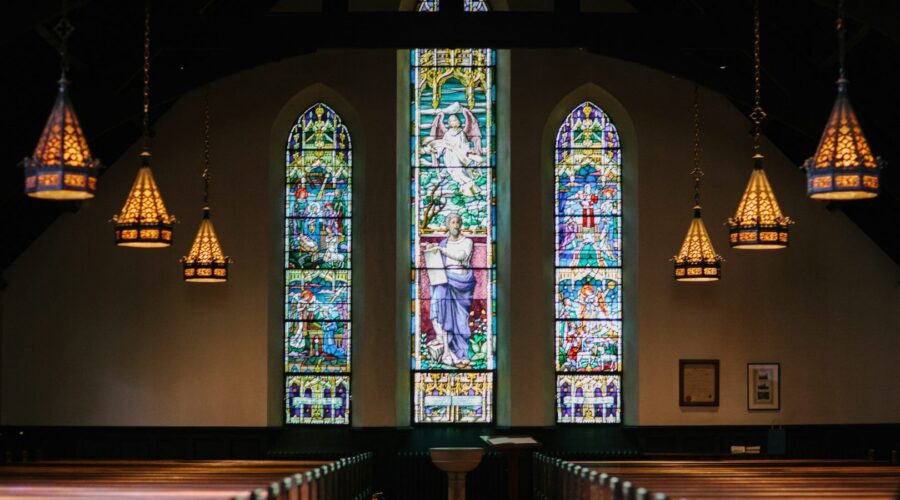
Discover the Welcoming Embrace of Fellowship Community Church
Introduction
In a world filled with division and uncertainty, Fellowship Community Church stands as a beacon of hope and belonging. Guided by the principles of love, acceptance, and service, our church community offers a nurturing environment where individuals can connect, grow, and make a positive impact on the world.
The Mission of Fellowship Community Church
Our mission is to create a vibrant and inclusive community that:
- Empowers individuals to live lives of purpose and meaning through faith in Jesus Christ.
- Foster relationships that build a sense of belonging and support.
- Creates opportunities for spiritual growth, service, and outreach to those in need.
What to Expect at Fellowship Community Church
At Fellowship Community Church, you will experience:
Welcoming Atmosphere:
Our church is a place where everyone is embraced with warmth and acceptance. We believe that each person is a valuable member of our community, regardless of their background, beliefs, or experiences.
Engaging Worship Services:
Our worship services are designed to inspire, uplift, and connect us with God. We offer a blend of contemporary and traditional music, thought-provoking sermons, and opportunities for prayer and reflection.
Life-Changing Groups:
We believe that real growth happens in community. That’s why we offer a variety of small groups for all ages and interests, where members can connect, learn, and grow together.
Opportunities to Serve:
We are passionate about making a difference in our community and beyond. Fellowship Community Church offers numerous opportunities to get involved in local and global service projects, reaching out to those in need.
Our Values
Fellowship Community Church is built on the following core values:
Value Description Love We believe that love is the foundation of everything we do. We strive to love God and our neighbors with all our hearts. Acceptance We believe that everyone is created in the image of God and deserves to be treated with respect. We welcome all people, regardless of their differences. Humility We believe that true greatness comes from serving others. We strive to be humble and to lift up those around us. Integrity We believe in living our lives with honesty and integrity. We are committed to transparency and accountability. Service We believe that we are called to serve others. We actively seek opportunities to make a positive impact in our community and the world. Membership at Fellowship Community Church
We encourage anyone who is interested in joining our church community to become a member. Membership is open to all individuals who subscribe to our mission and values. To become a member, you can:
- Attend our services regularly.
- Connect with a small group or participate in other church activities.
- Complete a membership form and meet with our pastor.
Contact Us
We would love to connect with you and answer any questions you may have. Please feel free to contact us at:
[email protected] | (555) 555-1212
Conclusion
Fellowship Community Church is a place where you can find love, acceptance, and purpose. We invite you to join us on this incredible journey of faith and community. Together, we can make a difference in the world and live lives filled with meaning and joy.

The Sacrament of Baptism: A Comprehensive Guide
Introduction
Baptism is a sacrament that marks the beginning of a Christian’s journey. It is a sign of our faith in God and our commitment to follow Jesus Christ. Through baptism, we are washed clean of our sins and become members of the Church.
The History of Baptism
Baptism has been practiced in the Christian Church since the time of Jesus. The first recorded instance of baptism is in the Gospel of Matthew, where Jesus commands his disciples to “go and make disciples of all nations, baptizing them in the name of the Father and of the Son and of the Holy Spirit” (Matthew 28:19).
In the early Church, baptism was typically performed by immersion. This was a symbolic way of representing the death and resurrection of Jesus Christ. However, over time, the practice of sprinkling or pouring water over the head became more common.
The Meaning of Baptism
Baptism has several important meanings. First, it is a sign of our faith in God. We believe that God created us and loves us, and that Jesus Christ died to save us from our sins. When we are baptized, we are publicly declaring our faith in God.
Second, baptism is a sign of our commitment to follow Jesus Christ. We are not just baptized once and then forget about it. Baptism is a lifelong commitment to follow Jesus’ teachings and to live a life that is pleasing to him.
Third, baptism is a sign of our membership in the Church. When we are baptized, we are not just joining a club. We are joining a family of believers who have all been baptized in the name of the Father, the Son, and the Holy Spirit.
The Process of Baptism
The process of baptism can vary from church to church. However, there are some basic steps that are typically followed.
- The person to be baptized is presented to the minister.
- The minister asks the person if they believe in God, Jesus Christ, and the Holy Spirit.
- The person to be baptized is then baptized in the name of the Father, the Son, and the Holy Spirit.
- The person to be baptized is welcomed into the Church.
The Effects of Baptism
Baptism has several important effects.
- We are forgiven of our sins.
- We become members of the Church.
- We receive the Holy Spirit.
- We are empowered to live a Christian life.
Conclusion
Baptism is a sacrament that can have a profound impact on our lives. It is a sign of our faith in God, our commitment to follow Jesus Christ, and our membership in the Church. If you have not been baptized, I encourage you to consider taking this important step. It is a decision that you will not regret.
Frequently Asked Questions
- What is the right age to be baptized?
- There is no set age for baptism. However, some churches recommend that infants be baptized, while others wait until the person is old enough to make a decision for themselves.
- Can I be baptized more than once?
- No. Baptism is a one-time event. Once you are baptized, you are a member of the Church for life.
- What if I am not sure if I want to be baptized?
- Talk to your pastor or priest. They can help you to decide if baptism is right for you.
Resources

St. Augustine Church: A Historic Landmark in Florida
St. Augustine Church, located in the heart of St. Augustine, Florida, is a majestic architectural marvel that stands as a testament to the city’s rich history and enduring faith.
History and Significance
St. Augustine Church was founded in 1565 by Spanish missionaries and is the oldest continuously operating Catholic church in the United States. It has witnessed countless historical events, including the founding of St. Augustine—the oldest continuously inhabited European settlement in the country—and has played a pivotal role in shaping the city’s religious and cultural identity.
Role in the Catholic Church
St. Augustine Church is the cathedral of the Diocese of St. Augustine, which encompasses 18 counties in northeast Florida. As the mother church of the diocese, it serves as the seat of the bishop and is a center of Catholic life for the region.
Architectural Heritage
The church building itself is a masterpiece of Spanish colonial architecture, featuring intricate stonework, a vaulted ceiling, and a towering bell tower. Over the centuries, it has undergone several renovations and expansions, each adding to its historical and architectural significance.
Interior and Features
Stepping inside St. Augustine Church is like taking a journey through time. The interior is adorned with stunning artwork, including:
- Altarpieces: The main altar features a beautiful painting of the Crucifixion, while the side altars depict scenes from the lives of various saints.
- Statues: The church is home to several impressive statues, including those of St. Augustine, St. Francis of Assisi, and the Blessed Virgin Mary.
- Stained Glass Windows: The colorful stained glass windows depict biblical scenes and historical events, adding a vibrant touch to the interior.
Services and Activities
St. Augustine Church offers a variety of services and activities for its congregation and visitors alike.
Mass Schedules
The church offers daily Mass services at various times throughout the week, including:
Day Time Monday – Friday 8:00 AM Saturday 8:00 AM, 4:00 PM (Confession) Sunday 7:30 AM (Spanish), 9:00 AM, 10:30 AM, 12:00 PM (Spanish), 5:00 PM Ministries
The church supports a wide range of ministries, including:
- Altar servers
- Choir
- Eucharistic ministers
- Lectors
- Social outreach programs
Community Events
St. Augustine Church hosts various community events throughout the year, such as:
- Parish festivals
- Concerts
- Historical tours
- Fundraisers
Visiting and Accessibility
St. Augustine Church is open to visitors and is wheelchair accessible. Here are some practical information for your visit:
Visiting Hours
The church is open daily from 8:00 AM to 5:00 PM.
Location and Parking
The church is located at 167 St. George Street in the heart of St. Augustine. Street parking is available in the surrounding area.
Accessibility
The church is equipped with ramps and elevators for easy access for visitors with disabilities.
Conclusion
St. Augustine Church is not merely a historical landmark but a vibrant and enduring center of faith and community in St. Augustine. Its rich history, stunning architecture, and active parish life make it a must-visit destination for anyone interested in the city’s cultural and spiritual heritage.
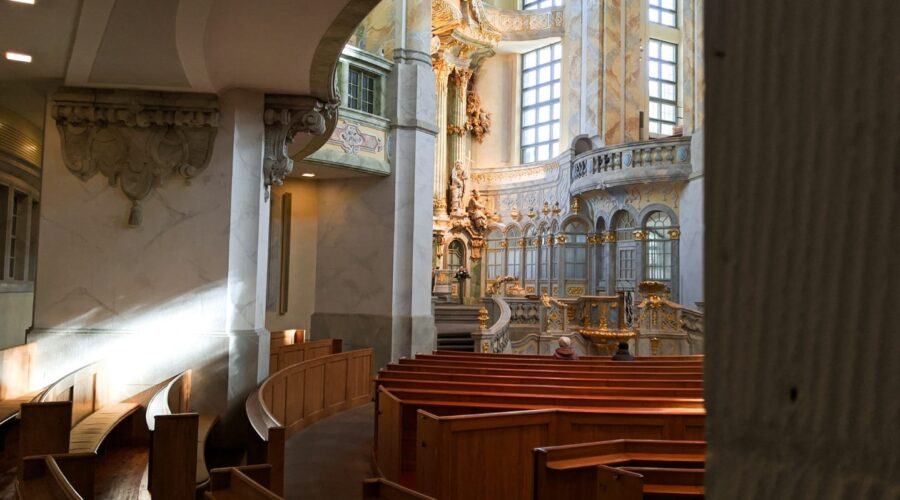
Explore the Intriguing World of Pentecostal Religion: A Comprehensive Guide
Introduction
Pentecostalism, a charismatic movement within Christianity, emerged in the early 20th century and has since become a significant global force. Its distinct beliefs and practices have attracted millions of followers worldwide. This comprehensive guide aims to shed light on the history, beliefs, practices, and cultural impact of Pentecostal religion.
Historical Roots
Origins in Azusa Street Revival
The Pentecostal movement traces its roots to the Azusa Street Revival in Los Angeles, California, from 1906 to 1915. Led by William J. Seymour, an African American preacher, the revival was characterized by intense emotional experiences, glossolalia (speaking in tongues), and miraculous healings.
Spread and Global Expansion
From Azusa Street, the Pentecostal movement spread rapidly throughout the United States and beyond. Missionaries carried the message to Africa, Latin America, and Asia, where it quickly took root in diverse cultural contexts.
Core Beliefs
Emphasis on the Holy Spirit
Pentecostals believe that the baptism of the Holy Spirit is a distinct experience following salvation. This indwelling of the Spirit empowers believers with spiritual gifts, including glossolalia, prophecy, and healing.
Glossolalia (Speaking in Tongues)
Glossolalia, the ability to speak in unknown languages, is considered by Pentecostals to be a key sign of being filled with the Holy Spirit. It is often practiced during worship services as an expression of devotion and prayer.
Miraculous Healings
Pentecostals firmly believe in the power of God to heal both physical and emotional ailments. They frequently hold healing services where prayers and anointings are used to restore the sick.
Practices and Worship
Emphasis on Personal Experience
Pentecostal worship services are known for their vibrant and emotional nature. They emphasize personal experiences of the Holy Spirit, including the expression of spiritual gifts and spontaneous testimonies.
Prophetic Ministry
Prophecy, the ability to deliver messages from God, is highly valued in Pentecostal churches. Prophets are often consulted for guidance and direction.
Spirit-Filled Living
Pentecostals believe that believers should strive to live a Spirit-filled life, characterized by obedience to God’s word, prayer, and the manifestation of spiritual gifts.
Cultural Impact
Social Transformation
Pentecostalism has had a significant impact on the lives of its adherents. Its emphasis on personal conversion has contributed to the transformation of individuals and communities, particularly in marginalized areas.
Music and Arts
Pentecostal music and arts are characterized by their vibrant rhythms, enthusiastic singing, and expressive dance. They have influenced popular culture and inspired numerous musicians and artists.
Global Outreach
Pentecostalism is a truly global religion, with churches and congregations established in almost every country. Its emphasis on evangelism has contributed to the spread of Christianity worldwide.
Conclusion
Pentecostal religion is a dynamic and evolving movement that has played a significant role in the history and spirituality of Christianity. Its emphasis on the Holy Spirit, spiritual experiences, and social transformation continues to attract followers from diverse backgrounds. This comprehensive guide has provided an in-depth exploration of the key aspects of Pentecostal religion, shedding light on its beliefs, practices, and cultural impact.
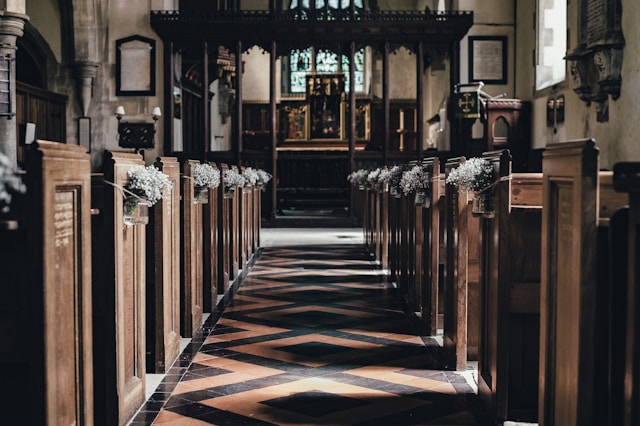
Bethany United Methodist Church: A Beacon of Faith and Community
Bethany United Methodist Church, nestled in the heart of a vibrant community, stands as a testament to the power of faith and its transformative influence on individuals and society. With a rich history spanning decades, the church has played a pivotal role in shaping the spiritual, social, and cultural landscape of its surroundings. This comprehensive guide will delve into the captivating story of Bethany United Methodist Church, exploring its foundational principles, vibrant ministries, and enduring impact on the lives it touches.
A Historical Tapestry
The genesis of Bethany United Methodist Church can be traced back to the late 19th century, when a group of devout believers sought to establish a spiritual haven for the growing community. In 1896, a modest frame building was constructed, marking the humble beginnings of the congregation. Over the years, the church underwent several expansions and renovations to accommodate its burgeoning membership.
Key Milestones
* 1896: Founding of Bethany United Methodist Church
* 1920: Construction of a larger sanctuary
* 1955: Expansion to include a Sunday school wing
* 1985: Dedication of a new sanctuary and education centerCore Beliefs and Values
Bethany United Methodist Church adheres to the core tenets of Methodism, a Protestant denomination founded by John Wesley in the 18th century. The church’s beliefs center around the following principles:
* Grace: The unconditional love and forgiveness of God extended to all people.
* Scripture: The Bible as the ultimate authority for faith and practice.
* Holiness: The pursuit of personal and societal transformation through God’s grace.
* Evangelism: The sharing of the Gospel message with the world.
* Service: The embodiment of Christ’s love through acts of compassion and outreach.Vibrant Ministries
Bethany United Methodist Church offers a wide range of ministries that cater to the spiritual, social, and educational needs of its members and the wider community. These ministries include:
Worship Services
The church holds regular worship services on Sundays, offering a blend of traditional and contemporary styles. These services feature uplifting music, inspiring preaching, and opportunities for personal reflection and communion.
Sunday School
Bethany United Methodist Church offers a comprehensive Sunday school program for children, youth, and adults. The classes provide age-appropriate Bible study, faith formation, and fellowship opportunities.
Small Groups
The church encourages the formation of small groups, where members can engage in deeper Bible study, prayer, and fellowship. These groups meet at various times throughout the week and foster a sense of community and spiritual growth.
Children’s and Youth Ministries
Bethany United Methodist Church has a thriving children’s and youth ministry. Programs such as Sunday school, Vacation Bible School, and youth group provide age-appropriate faith formation and fun activities for children and youth.
Adult Ministries
The church offers a variety of adult ministries, including Bible studies, book clubs, and mission trips. These ministries provide opportunities for lifelong learning, spiritual growth, and service.
Outreach and Missions
Bethany United Methodist Church is actively involved in outreach and missions both locally and globally. The church supports a variety of local charities and non-profit organizations, and organizes mission trips to serve communities in need.
Community Impact
Bethany United Methodist Church has a profound impact on the surrounding community, extending its reach beyond the walls of the sanctuary. The church:
* Provides Social Services: Bethany United Methodist Church operates a food pantry, clothing closet, and community meal program, offering assistance to those in need.
* Supports Local Schools: The church provides support to local schools through volunteerism and financial donations.
* Fosters Interfaith Collaboration: Bethany United Methodist Church is an active member of the local interfaith community, participating in dialogue and joint outreach efforts.
* Encourages Civic Engagement: The church encourages its members to be active citizens and to participate in local government and community organizations.Leadership and Staff
Bethany United Methodist Church is guided by a dedicated pastoral staff and lay leadership team. The senior pastor, along with associate pastors and lay leaders, provide spiritual guidance, administrative oversight, and pastoral care to the congregation. The staff includes ministers of music, youth, and education who work tirelessly to support the church’s ministries.
Contact Information
Bethany United Methodist Church
123 Main Street
Anytown, CA 12345
(123) 456-7890
[email protected]
www.bethanyumc.orgConclusion
Bethany United Methodist Church stands as a beacon of faith and a vibrant hub for spiritual growth, community engagement, and service. With its unwavering commitment to the core principles of Methodism, the church continues to inspire and empower its members and make a positive impact on the surrounding community. Whether seeking spiritual guidance, a sense of belonging, or opportunities to serve, Bethany United Methodist Church welcomes all with open arms and a heart filled with God’s love.
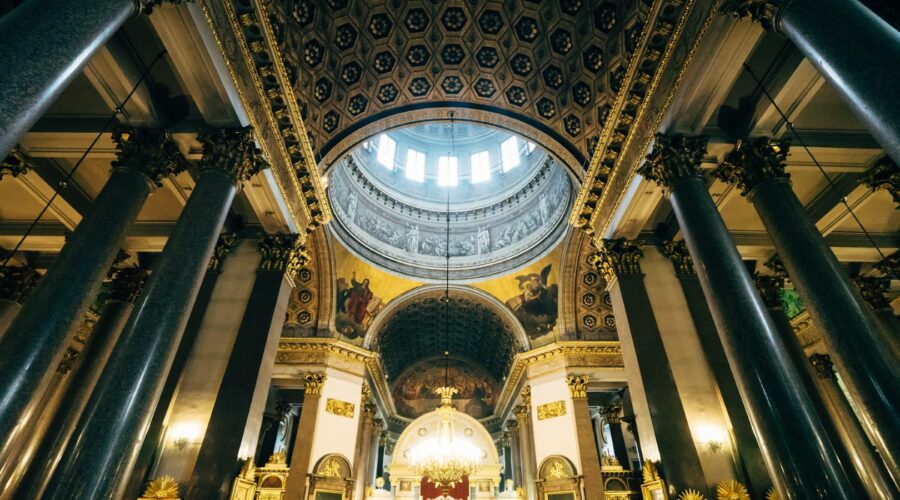
Discover the History, Significance, and Architectural Marvels of Holy Rosary Church
Introduction
Holy Rosary Church stands as a testament to faith, artistry, and the rich history of the Catholic Church. Its intricate design, awe-inspiring interiors, and profound spiritual significance make it a must-visit destination for pilgrims, worshippers, and art enthusiasts alike. In this comprehensive guide, we delve into the fascinating world of Holy Rosary Church, exploring its origins, architectural wonders, and profound religious meaning.
A Tapestry of Faith: The History of Holy Rosary Church
- 12th Century: The foundation of the first church on the site.
- 13th Century: Expansion and renovation, becoming a parish church.
- 15th Century: The church gains prominence as a pilgrimage site.
- 17th Century: Rebuilt in the Gothic style, showcasing exquisite vaulting and stained glass.
- 19th Century: Extensive renovations and additions, including the iconic spire and Lady Chapel.
Architectural Masterpiece: Exploring the Marvels of Holy Rosary Church
Holy Rosary Church boasts an extraordinary array of architectural styles and features that have defined its beauty for centuries.
Gothic Grandeur: The Nave
Step into the awe-inspiring nave, soaring 100 feet high and illuminated by intricate stained glass windows. The vaulted ceilings, supported by slender columns, create a sense of lightness and spirituality.
Transepts: Tranquility and Devotion
The transepts, located on either side of the nave, offer a sense of tranquility and devotion. The northern transept houses the Shrine of Our Lady of the Rosary, a revered pilgrimage destination. The southern transept features a stunning rose window and a medieval painting of St. Christopher.
Lady Chapel: A Haven of Beauty
Adjacent to the south transept lies the Lady Chapel, an exquisite space dedicated to the Virgin Mary. Its intricate tracery, delicate carvings, and beautiful altar create an atmosphere of ethereal grace.
Spire: Reaching for the Heavens
Dominating the skyline, the towering spire of Holy Rosary Church rises 200 feet into the sky. Its intricate filigree and graceful design serve as a symbol of aspiration and divine connection.
Beyond the Architecture: The Spiritual Significance of Holy Rosary Church
Beyond its architectural splendor, Holy Rosary Church holds profound religious significance for Catholics worldwide.
Pilgrimage Site: A Journey of Faith
For centuries, Holy Rosary Church has been a revered pilgrimage site for Catholics seeking spiritual renewal and blessings. Pilgrims from near and far come to venerate the Shrine of Our Lady of the Rosary and to experience the transformative power of the church.
Eucharistic Adoration: A Sacred Encounter
Holy Rosary Church is home to a perpetual adoration chapel, where the Blessed Sacrament is exposed for prayer and worship. Here, believers can spend time in silent adoration, encountering Christ’s presence in the Eucharist.
Community and Service: A Living Faith
Holy Rosary Church is not merely a building but a vibrant community of faith. It offers a wide range of programs, services, and outreach activities, including Sunday Mass, Bible study groups, and volunteer opportunities. Through these initiatives, the church seeks to serve the spiritual, social, and material needs of its parishioners and the wider community.
Plan Your Visit: Essential Information for Pilgrims and Visitors
1. Location: Holy Rosary Church is situated in the heart of downtown Minneapolis, Minnesota.
2. Mass Times: Mass is celebrated daily at various times. Check the church website for the most up-to-date schedule.
3. Pilgrimages: Pilgrimages to Holy Rosary Church can be arranged through authorized tour operators or directly with the church.
4. Accessibility: The church is wheelchair accessible and provides assistive listening devices.
5. Admission: Admission to the church is free. However, donations are gratefully accepted to support its upkeep and ministries.Conclusion
Holy Rosary Church is a beacon of faith, a masterpiece of architecture, and a vibrant center of spiritual life. Its rich history, stunning beauty, and profound significance make it a destination that enriches the soul and inspires awe. Whether you are a devout pilgrim, an art aficionado, or simply seeking a moment of tranquility, Holy Rosary Church awaits your visit, ready to unfold its captivating story and transform your spirit.
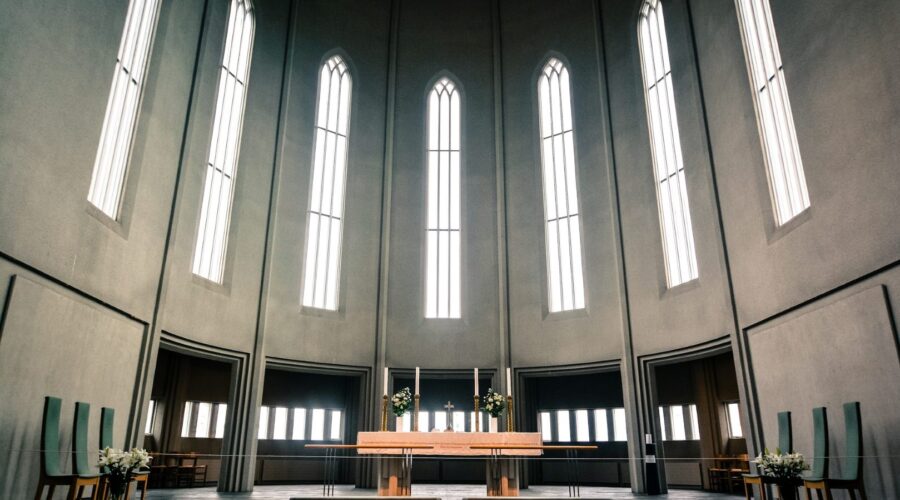
CCD Catholic: A Comprehensive Guide to the Confraternity of Christian Doctrine
What is CCD Catholic?
The Confraternity of Christian Doctrine (CCD) is a Catholic organization dedicated to providing religious education to children and adults. Founded in 1562, it is one of the oldest and largest Catholic organizations in the world, with over 2 million members in over 100 countries.
The CCD’s mission is to:
- Provide catechetical instruction to children and adults
- Train and support catechists
- Develop and distribute catechetical materials
- Promote Catholic education and evangelization
History of CCD Catholic
The CCD was founded by St. Charles Borromeo in 1562 in Milan, Italy. At the time, the Catholic Church was facing a crisis of faith due to the Protestant Reformation. St. Charles Borromeo believed that the best way to combat heresy was to provide sound religious instruction to the people.
The CCD quickly spread throughout Europe and the Americas. In the United States, the CCD was established in 1882 by Archbishop James Gibbons of Baltimore. The organization grew rapidly in the 20th century, as the Catholic population in the United States increased.
CCD Catholic Today
Today, the CCD is an essential part of Catholic life in many parts of the world. It provides religious education to millions of children and adults, and is a vital resource for catechists and other Catholic educators.
The CCD is governed by the National Council of Catholic Bishops (NCCB). The NCCB sets policies and guidelines for the CCD, and provides resources and support to local CCD programs.
CCD Catholic Programs
The CCD offers a variety of programs to meet the needs of children and adults of all ages. These programs include:
- Sunday School: Sunday School is a weekly program that provides religious instruction to children and adults. Sunday School classes are typically held in the morning, before or after Mass.
- Vacation Bible School: Vacation Bible School is a week-long program that provides religious instruction to children during the summer months. Vacation Bible School is typically held at a church or school.
- Catechism Classes: Catechism classes are a more in-depth program of religious instruction that is typically offered to children in grades 1-8. Catechism classes are typically held once a week, for one hour.
- Adult Faith Formation: Adult Faith Formation programs are designed to help adults grow in their faith and understanding of the Catholic Church. Adult Faith Formation programs typically offer a variety of classes and activities, such as Bible studies, discussion groups, and retreats.
CCD Catholic Catechists
Catechists are volunteer teachers who provide religious instruction to children and adults. Catechists are typically trained by the CCD, and they receive ongoing support from the CCD staff.
Catechists play a vital role in the CCD. They are responsible for providing sound religious instruction to the people, and for helping them to grow in their faith. Catechists are also role models for the children and adults they teach.
CCD Catholic Resources
The CCD offers a variety of resources to help catechists and other Catholic educators. These resources include:
- Catechisms: The CCD publishes a variety of catechisms, which are used to teach the Catholic faith. Catechisms are available for children and adults of all ages.
- Curriculum: The CCD also publishes a variety of curriculum materials, which can be used by catechists to plan and teach their classes. Curriculum materials are available for all levels of religious instruction.
- Training: The CCD offers a variety of training programs for catechists and other Catholic educators. Training programs are available online and in person.
- Support: The CCD provides a variety of support services to catechists and other Catholic educators. These services include online forums, email support, and phone support.
CCD Catholic and Evangelization
The CCD is an important tool for evangelization. By providing sound religious instruction to children and adults, the CCD helps to spread the Gospel and build up the Catholic faith.
The CCD also plays a role in inculturation, which is the process of integrating the Catholic faith into different cultures. By providing catechetical materials and training in local languages, the CCD helps to make the Catholic faith accessible to people of all cultures.
Conclusion
The Confraternity of Christian Doctrine is a vital part of Catholic life. It provides religious education to millions of children and adults, and is a resource for catechists and other Catholic educators. The CCD is also an important tool for evangelization and inculturation.
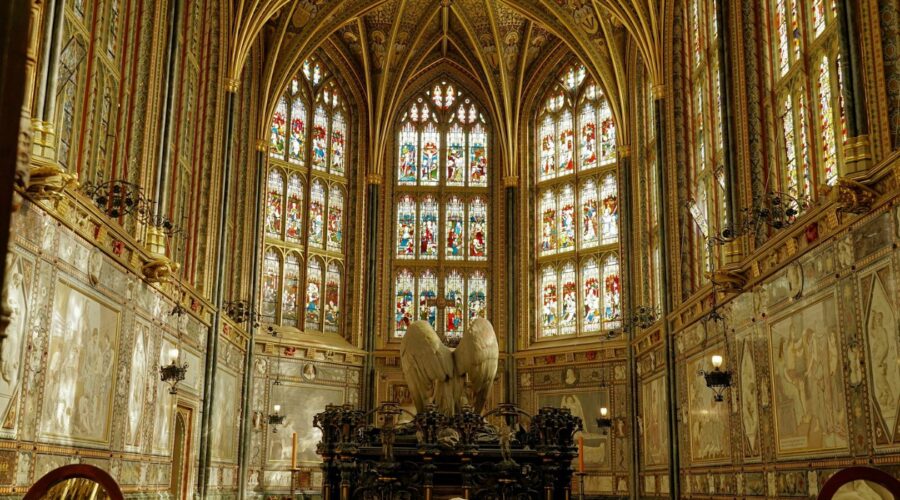
Pastor Jennings: A Guiding Light in Faith and Community
Pastor Jennings is a renowned spiritual leader, community activist, and motivational speaker who has dedicated his life to empowering individuals and fostering a sense of belonging. With decades of experience in ministry, he has profoundly impacted countless lives through his unwavering commitment to uplifting the spirits and guiding souls toward spiritual fulfillment.
Spiritual Guidance and Inspiration
As a pastor, Jennings’s primary role is to provide spiritual guidance and inspiration to his congregation. Through thought-provoking sermons, insightful Bible studies, and personal counseling sessions, he helps individuals deepen their understanding of faith, explore their spiritual journeys, and discover a meaningful connection with the divine. His messages are characterized by their authenticity, practicality, and ability to resonate with people from all walks of life.
Key Teachings:
- The power of faith in overcoming adversity
- The importance of love, forgiveness, and compassion
- The search for purpose and meaning in life
- The role of prayer and meditation in spiritual growth
Jennings believes that spirituality is not limited to religious practices but permeates all aspects of human existence. He encourages his followers to seek spiritual fulfillment in their relationships, careers, and daily interactions. By fostering a sense of interconnectedness and communal support, he promotes a holistic approach to spiritual growth that extends beyond the walls of the church.
Community Activism and Outreach
Pastor Jennings is not only a spiritual leader but also a passionate advocate for social justice and community well-being. He believes that faith should translate into tangible actions that uplift the underprivileged and create a more equitable society.
Community Involvement:
- Establishing food banks and homeless shelters
- Supporting educational programs for at-risk youth
- Advocating for social and economic justice
- Providing counseling and support services to marginalized communities
Through his tireless efforts, Jennings has played a pivotal role in improving the lives of countless individuals and families in need. He recognizes the importance of addressing both spiritual and material needs and actively collaborates with other organizations and volunteers to make a lasting impact on his community.
Motivational Speaking and Inspiration
In addition to his pastoral and community work, Pastor Jennings is also a sought-after motivational speaker. He has delivered countless speeches to audiences around the globe, inspiring and empowering individuals to overcome challenges, pursue their dreams, and live fulfilling lives.
Motivational Topics:
- The power of resilience in the face of adversity
- Unlocking inner strength and potential
- The importance of setting goals and taking action
- Finding purpose and meaning in life
Jennings’s motivational speeches are characterized by their authenticity, humor, and practical advice. He shares personal anecdotes, inspiring stories, and actionable tips that help individuals ignite their passion, overcome self-limiting beliefs, and achieve their full potential.
Personal Life and Background
Pastor Jennings was born and raised in a humble upbringing. He credits his parents and community members with instilling in him a strong work ethic, compassion, and a deep faith. After completing his theological studies, he began his ministry in a small church and gradually expanded his reach through his influential leadership and unwavering commitment to serving others.
Pastor Jennings is a family man, married with children. He enjoys spending time with his loved ones, reading, and engaging in outdoor activities. He maintains a healthy lifestyle and believes in the importance of balancing his personal life with his ministerial duties.
Legacy and Impact
Pastor Jennings’s legacy is one of inspiration, empowerment, and unwavering service to the community. He has touched the lives of countless individuals, guiding them on their spiritual journeys, advocating for their well-being, and inspiring them to reach their full potential. His commitment to uplifting others has left an enduring mark on the hearts of those he has touched.
As a testament to his impact, Pastor Jennings has received numerous awards and recognitions for his contributions to the community. He is a respected leader in both the religious and secular spheres, known for his wisdom, compassion, and unwavering dedication to empowering others.
Awards and Recognitions:
- Citizen of the Year Award
- Humanitarian Award
- Honorary Doctorate in Divinity
- Lifetime Achievement Award
The legacy of Pastor Jennings will undoubtedly endure for generations to come. His teachings, community service, and motivational speeches have sown seeds of hope, inspiration, and positive change in the hearts of countless individuals.
Conclusion
Pastor Jennings is a true beacon of hope, a guiding light in faith, and a tireless advocate for community well-being. Through his spiritual guidance, community activism, and motivational speaking, he has made a profound impact on countless lives, empowering individuals to deepen their connection with the divine, pursue their dreams, and make a meaningful contribution to society.
As we reflect on the remarkable journey of Pastor Jennings, let us be inspired by his unwavering commitment to uplifting others and strive to emulate his spirit of compassion, service, and relentless pursuit of a better world.